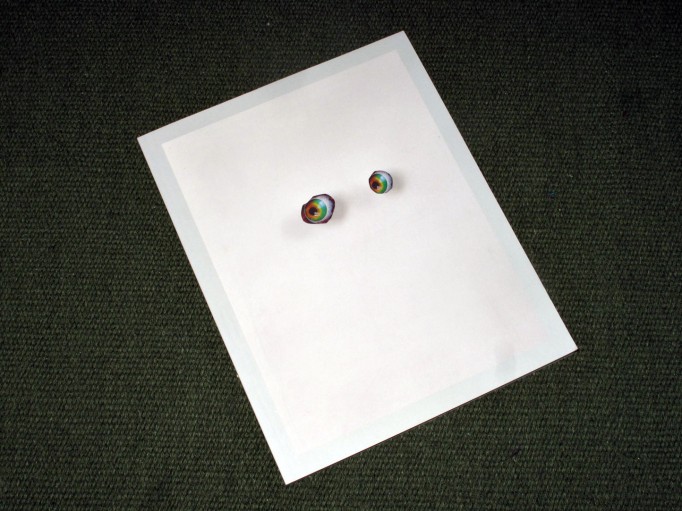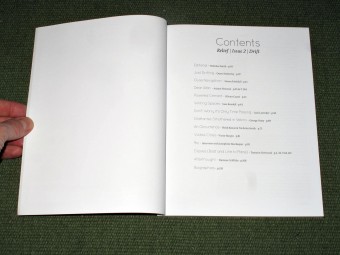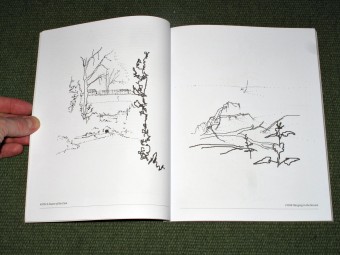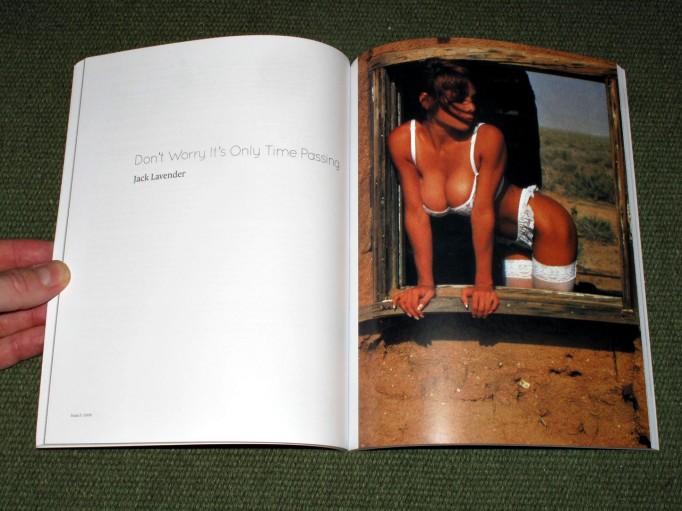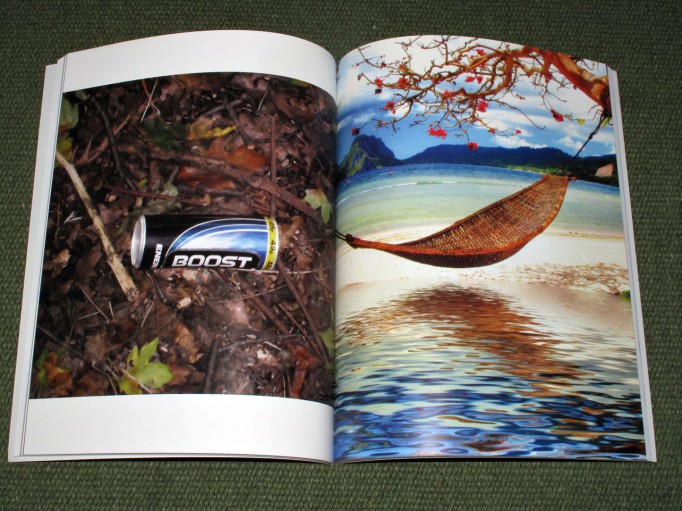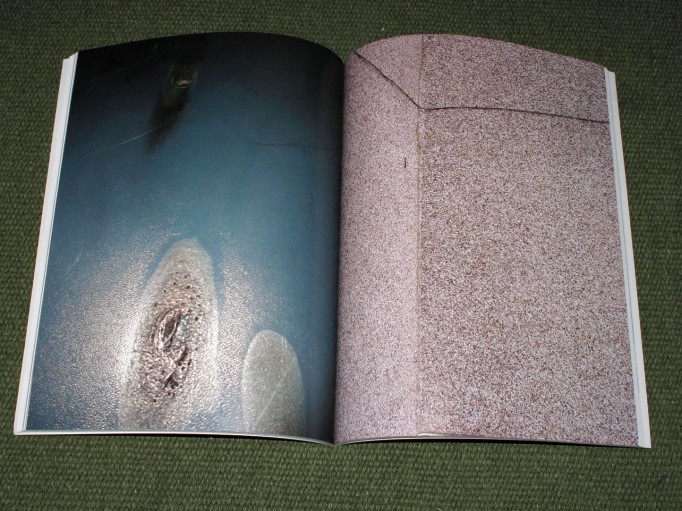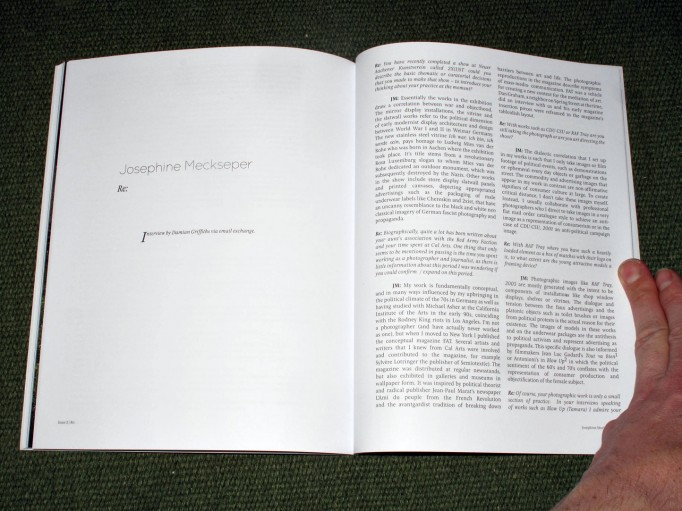Relief Journal 2: Drift. Heidi Kawai Smith, Nicholas Smith (Eds.)
Posted in Uncategorized on December 8th, 2014 by adminTags: Heidi Kawai Smith, Nicholas Smith, Relief Journal
Relief Journal 2: Drift. Heidi Kawai Smith, Nicholas Smith (Eds.)
he theme of the second issue of Relief is Drift a rudimentary translation of the French term dérive popularised by Guy Debord and adopted by the Situationists to describe a way to experience the urban through unplanned drifts. This act traditionally signified a political gesture that strived to create friction in the world of capitalism, (or in the mind of the flâneur at least). Today such acts are perceived as privileged and dated, but the reason that I wanted to focus on this theme was because I believe that the Drift is an extremely prevalent practice within our lives, this process however has been internalised. Alot of what we used to experience outside, we now experience inside, so how we branch out into the world has changed. What does it mean to be in a city? Where is that city? How do we become public? Richard Senate, in his book The Fall of Public Man, announces that The Stage Tells a Story the Streets No Longer Tell, a statement made in 1977 which, seems to now have become inverted in the reflection of the dormant LED monitors that are installed in our workplaces, our homes, our journeys, our person. The Streets Tell a Story the Stage No Longer Tells – our journeys are virtual first and real second, they become real at the point that we choose to become public.
The contributors for this issue have chosen to become public and in doing so have either rendered themselves visible or disappeared. We hope that Relief allows a space for our contributors to become public in a way that is less bureaucratic than a gallery or institution and allows for the fleeting idea to sit next to the major work. Encapsulating the point in between the proposal and finished work we have, in the same way we did with the first issue commissioned new works, reconfigured older works, published archival documents and made talks and lectures black and white. A much more text heavy endeavour this time in a strive to become more ‘journally’ and less ‘ziney’, sticking to the same structure but more words, less pictures.
Owen Hatherley sets the tone to Drift, passing by the situationists, via Warsaw, Southampton, Notting Hill, Depford and a Chinese takeaway in Stockwell to the soundtrack of Pulp and the Manic Street Preachers. ‘An Occurrence’ provided by the editors looks at the work of Chris Marker and his misclassification by art historians in relation to the works of Hito Steryl. Jack Lavender has put together the photographic essay and provided the front cover image, displaying a potent articulation of the artists drift. Damian Griffiths interview’s German born US based artist Josephine Meckseper, her shop window displays that conflate with screens and advertisements, chrome rims, mirrors, underwear models and Brecht – the work is found and made, she talks about her aesthetic journeys and background.
The invited contributors for this issue are; Olivier Castel, who presents a selection of sand drawings from a recent show in London, Powered Cement originally installed with a light that either made the image visible or not, are here displayed in black and white on the static page. Tamarin Norwood has punctuated the publication beautifully with drawings that are between the digital and the analogue, accompanying this work is also a video piece that is available on the Relief website. Victor Burgin has provided what I have come to refer to as the ‘spine’ of the issue, a text originally given as a keynote talk in the Tate; Visible Cities starts in Palomanova and traverses through a version of Dubrovnik made entirely from images on Flickr, he pictures the streets of Naples, Paris and Milan with the use of the films of Roberto Rossellini, Michaelangelo Antonioni and Éric Rohmer. Simon Fatihfull has edited a collection of digital drawings of a journey from the Rivers Cam and Ouse, they are part of large collection of on-going drawings which started in 2000. In Dilatantes Smothered in Velcro George Vasey shares a curatorial diary of his journey in the strange space of making exhibitions, the banality and the sublime blindness of accumulating new knowledge through allowing unexpected situations, objects and systems to interfere with what we may consider as a straight forward profession. Jane Rendell visits three instances; writing spaces through an architectural discourse using of course, the works and lives of artists. In Dear Allan Arjuna Neuman writes to his old tutor and mentor, Allan Sekula, is he aware that these emails will never reach his intended reader?
Relief is a project that is created in-between artistic practices, jobs and many personal commitments, not only on my behalf as the editor but everyone who contributes to this publication. I would like to thank the contributors for being so generous and you for your support through buying Relief, as your support will allow us to continue publishing and providing a dynamic and insightful dialogue between our audience and our contributors.
Front cover image: Jack Lavender Unit 9, 2014, Courtesy The Approach, London
19 x 24 cm
116 pages
Deprecated: link_pages is deprecated since version 2.1.0! Use wp_link_pages() instead. in /home/clients/04badc5f584cd5c2e11ec172df35785c/web/site/wp-includes/functions.php on line 5326

